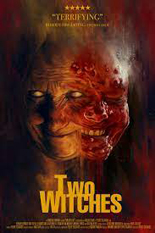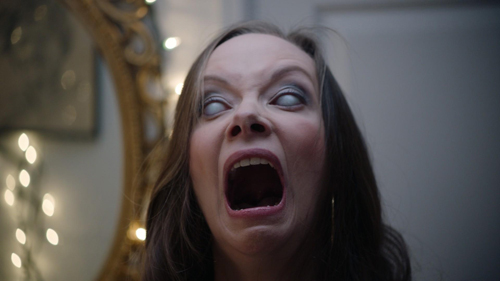
 Outside of The Most Dangerous Game, has genre cinema latched onto another concept more often than Eyes Without a Face? It’s the story gift that keeps on giving, as long as you change just enough elements to avoid litigation. Just ask character actor Michael Pataki (The Bat People), who leveraged it for Mansion of the Doomed, his first of two movies as director.
Outside of The Most Dangerous Game, has genre cinema latched onto another concept more often than Eyes Without a Face? It’s the story gift that keeps on giving, as long as you change just enough elements to avoid litigation. Just ask character actor Michael Pataki (The Bat People), who leveraged it for Mansion of the Doomed, his first of two movies as director.
The eventually mad doctor of this early Charles Band production is Leonard Chaney, a successful surgeon played by Richard Basehart (1977’s The Island of Dr. Moreau). When his lovely daughter, Nancy (Trish Stewart, 1976’s Time Travelers), is blinded in a car wreck, Dr. Chaney’s days of reading newspaper articles about meatloaf while she romps in the pool with her beau (Lance Henriksen, Aliens) are over.
Or are they?
Good news: Dr. Chaney restores Nancy’s sight by transplanting another person’s eyeballs! Bad news: They belonged to her boyfriend! But that poor sap doesn’t need them anymore, what with being kept in a basement cage like an animal and all.
Worse news: When Nancy’s eyesight proves short-lived, her father drugs hitchhikers and “job” applicants to swipe more peepers. Pataki more than delivers the ooey-gooey goods in the surgical scenes, with full orbs in their bloody, hanging-optic-nerved glory. As for all the unwitting eye donors now left with hollow sockets, the makeup effects by future four-time Academy Award winner “Stanley” Winston (Jurassic Park) are more convincing than films of this ilk usually got. (You might also recognize the name of the cinematographer: Andrew Davis, eventual director of 1993’s The Fugitive.)
 Although Basehart by no means slacks on the job, he’s not as at ease slumming than his more storied, Oscar-anointed partner in crime, Gloria Grahame (The Bad and the Beautiful), playing his assistant to the hilt. Look for her Blood and Lace co-star Vic Tayback as a detective and Marilyn Joi (C.O.D.) as one of Dr. Chaney’s, um, patients.
Although Basehart by no means slacks on the job, he’s not as at ease slumming than his more storied, Oscar-anointed partner in crime, Gloria Grahame (The Bad and the Beautiful), playing his assistant to the hilt. Look for her Blood and Lace co-star Vic Tayback as a detective and Marilyn Joi (C.O.D.) as one of Dr. Chaney’s, um, patients.
Mansion of the Doomed rides its cruel recruiting cycle hard before the blind learn about strength in numbers. Speaking of, Pataki’s second (and final) director’s gig found him mining another well-trod tale for Band in Cinderella, but he made it his own by adding fucking and other things Walt Disney would not have been able to unsee. —Rod Lott




 As
As 



